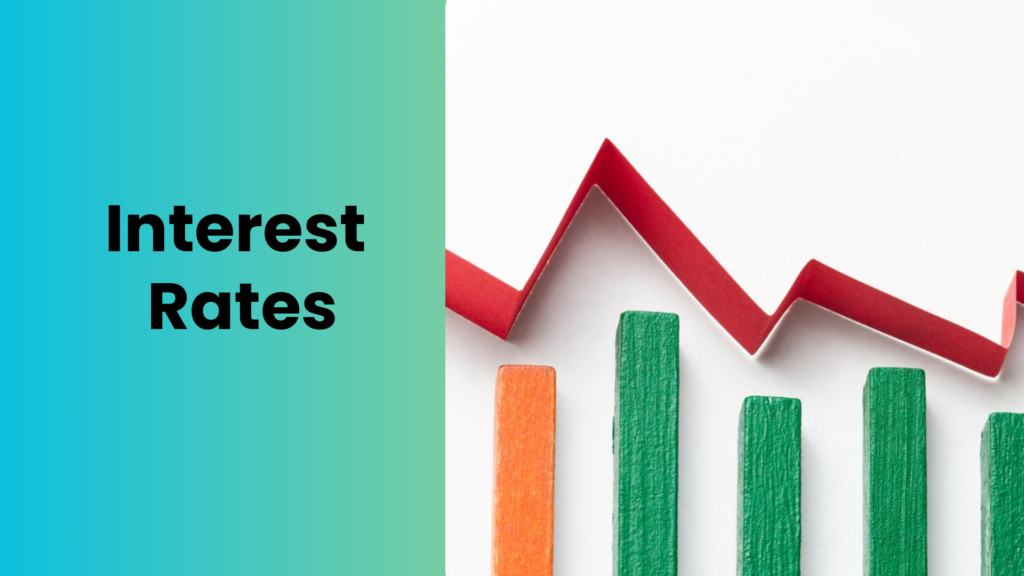Interest rates are pivotal to the economic landscape, serving as the price of money and a key determinant of borrowing and lending decisions. They influence various economic variables, including consumption, investment, inflation, exchange rates, and overall economic growth. Central banks often adjust interest rates as a tool to achieve macroeconomic objectives such as price stability, full employment, and sustainable growth.
1. Cost of Borrowing
Higher interest rates increase the cost of borrowing for individuals and businesses, impacting their ability to finance purchases, investments, and operations. This can discourage borrowing for consumption and investment purposes, affecting individual and business financial decisions. On the macro level, elevated borrowing costs can dampen aggregate demand and slow down economic activity.
2. Reduced Consumer Spending
With higher borrowing costs, consumers may have less disposable income available for spending on goods and services, leading to reduced consumption. Businesses across various sectors may experience lower sales and revenues as a result. On the macro level, decreased consumer spending can contribute to economic slowdown or recession if it persists over time.
3. Impact on Investments
Rising interest rates can increase the cost of capital for businesses, potentially reducing their willingness to invest in new projects, equipment, or research and development. This can affect firms’ profitability and competitiveness in the market. On the macro level, decreased investment can hinder productivity growth and limit the economy’s long-term potential for expansion.
4. Exchange Rate Dynamics
Higher interest rates may attract foreign investors seeking higher returns on investments denominated in the local currency. This increased demand can strengthen the exchange rate, making exports more expensive and imports cheaper. This can impact businesses involved in international trade. On the macro level, exchange rate movements affect trade balances and competitiveness, influencing overall economic performance.
5. Impact on Inflation
Micro-level Implication: Higher interest rates can reduce consumer spending and investment, potentially alleviating demand-pull inflationary pressures. However, they may also increase production costs for businesses, contributing to cost-push inflation. On the macro level, central banks may adjust interest rates to manage inflation and maintain price stability, which is essential for sustainable economic growth.
6. Government Debt Servicing
Higher interest rates increase the cost of servicing government debt, potentially leading to higher budget deficits and crowding out spending on essential public services. This can impact government borrowing costs and fiscal sustainability. On the macro level, elevated government debt servicing costs can strain investor confidence, impacting overall economic stability and growth prospects.
7. Savings Incentives
Higher interest rates can incentivize saving by offering higher returns on savings deposits and other interest-bearing accounts. This can encourage individuals and households to save more, potentially impacting consumption patterns in the short term. On the macro level, higher savings rates can contribute to increased capital accumulation and investment, fostering long-term economic growth.
8. Debt Burden for Borrowers
For individuals and businesses with existing debt obligations, higher interest rates can increase the cost of servicing debt, potentially leading to financial strain or default in extreme cases. This can impact creditworthiness and access to financing for future borrowing needs. On the macro level, a high debt burden for borrowers can hinder economic recovery and contribute to financial instability.
9. Asset Price Volatility
Changes in interest rates can influence asset prices, including stocks, bonds, and real estate. Higher interest rates may lead to lower bond prices and higher dividend yields, impacting investment returns for bondholders and shareholders. On the macro level, asset price volatility can affect investor confidence and wealth distribution, impacting overall economic stability.
10. Business Profitability and Investment Decisions
Higher interest rates can reduce businesses’ profitability by increasing borrowing costs and debt servicing obligations. This may lead to reduced investment in expansion, innovation, and hiring, impacting long-term growth prospects. On the macro level, decreased business investment can slow down economic growth and limit job creation, affecting overall employment levels and income distribution.
